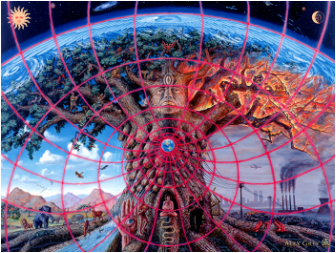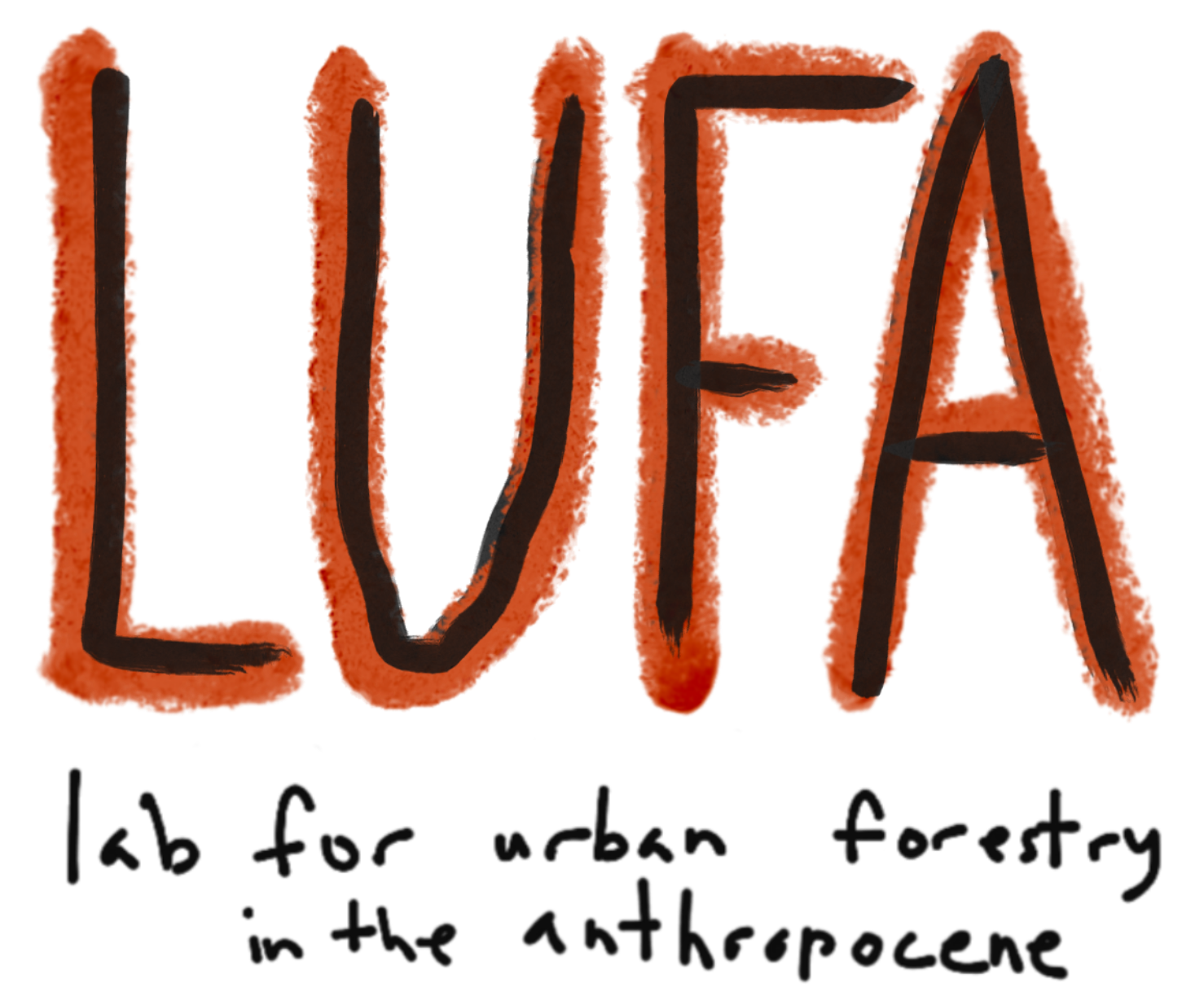BY Declan McInerney Alex Grey, Gaia, 1989, Oil on Linen, 96 x 144 in. www.AlexGrey.com Alex Grey, Gaia, 1989, Oil on Linen, 96 x 144 in. www.AlexGrey.com Ever since human beings could tell stories, the planet has been imagined through myth as a whole, functional being. The Greeks called her 'Gaia,' the source and mother of all life. While this personification may not be literally true, the essence of the myth is, Where would we be if not for planet Earth? The Earth, like a mother, provides the nourishment life requires. Today, the more evolved myth of science tells us that the planet does indeed work as a whole, not unlike an organic body. In the same way that my lungs regulate oxygen and carbon dioxide within my body, trees serve as the lungs of the planet by regulating the chemical composition of the atmosphere. Trees, however, do the complimentary opposite of our lungs by inhaling and storing carbon dioxide and releasing sweet, breathable oxygen.
Of course, breathable air isn’t the only reason we rely on trees. By regulating the carbon in the atmosphere, trees also regulate temperature and climate. Carbon is a greenhouse gas which means it traps heat in the atmosphere. A little bit of carbon is a good thing and heats the atmosphere to comfortable enough levels to harbor life. However, too much carbon can begin to cause problems as we’ll see. Trees maintain carbon levels for the planet at that sweet spot in between too much and too little, so that life can thrive. What a fantastic relationship humans have with trees, the two are hopelessly dependent on each other. Why then are humans so dead set on destroying our significant other? One of the most important ecosystems in maintaining this harmonious relationship between trees and human life is the Amazon rainforest. This immense rainforest in South America spans 1.4 billion acres and eight countries. It is about half of the world’s remaining rainforests and “despite covering only around 1% of the planet’s surface, the Amazon is home to 10% of all the wildlife species we know about – and probably a lot that we don’t know yet” (World Wildlife Fund). Unfortunately, the Amazon rainforest is continually being destroyed by deforestation. Deforestation is the destruction of forests for timber, agriculture, or other human purposes. Without a thorough understanding of Earth system science, deforestation looks great for human beings. The timber it provides can be used as fuel or sold for a profit. The land left behind is good and fertile for growing crops. The new unsheltered land reveals oil reservoirs and gold mines. The short term benefits are enormous for human beings. But we as a species have surpassed the short sighted understanding that our actions do not have any consequences. The reality of the new geological age, dubbed the Anthropocene, is that the Earth’s regulatory systems are now at the mercy of human beings. Deforestation has devastating effects not only on the Amazon but on the planet as a whole. The effects of Amazon deforestation on the planet has much to do with the effect climate change has on the planet, since the former contributes to the latter. The trees in the rainforest store an estimated 90 to 140 billion metric tons of carbon. That is 90 to 140 billion metric tons of carbon that would be released into the atmosphere if the whole rainforest was cut down. Deforestation also causes a negative feedback loop in which the released carbon causes areas to become dry and therefore susceptible to forest fires. Current carbon levels are at about 400 parts per million, nearly 200 above levels of the last geological era, the Holocene. The safe carbon level at which there are no deadly effects is around 350 ppm. As established earlier, the more carbon in the atmosphere, the more heat is trapped. Eventually, because of human activity such as precious rainforest deforestation, carbon will have trapped so much heat as to have melted the polar ice caps. This is known as the “tipping point” for climate scientists and it is essentially the point of no return. Once the ice caps melt, it would be extremely difficult to near impossible to bring global temperatures to their former (comfortable) glory. The results are catastrophic. Sea level rise means the flooding and destruction of port cities. Higher temperatures means more forest fires and failed crops. Global warming also means less precipitation which will eventually cause a reduction in freshwater availability. Rainforests serve as the planet’s carbon sinks. As modern technology continues to release carbon into the atmosphere, carbon sinks are becoming increasingly more important. Realistically, we should be planting trees, not destroying them. Seems pretty simple but the reality is far more complicated. On a global scale, the effects of deforestation in the Amazon are catastrophic. However, for many locals, deforestation means a better life, at least temporarily. Studies show that deforestation can bring economic prosperity to communities by selling the timber and setting up new farms. Deforestation also allows for better access to roads meaning better education and healthcare. However, these economic booms are often short-lived. Better access to roads causes a population increase and a general leveling out of the economy. Newly constructed farms are often weeded out by larger corporations or prove worthless without access to expensive fertilizers. In light of all this data, how are we dealing with deforestation? The recent Paris Agreement stresses that every country do their part in preventing further global warming. With the United States apparently sitting this round out, other countries are going to have to pick up the slack. However, a poor economy, agricultural lobbying, and a loose judicial system continue to invite illegal loggers into the Amazon. While deforestation rates have dramatically fallen within the past decade, the Amazon rainforest must continue to be vigorously protected as it plays a vital role in sustaining an environmentally friendly future.
0 Comments
Your comment will be posted after it is approved.
Leave a Reply. |
AuthorsStudents in Jess' ENV 151 Introduction to Sustainability write blog posts on a sustainability-related topic of their choice. ArchivesCategories
All
|
1110 West Belden Avenue Chicago Illinois 60614
|
Site last updated: August 9, 2018.


